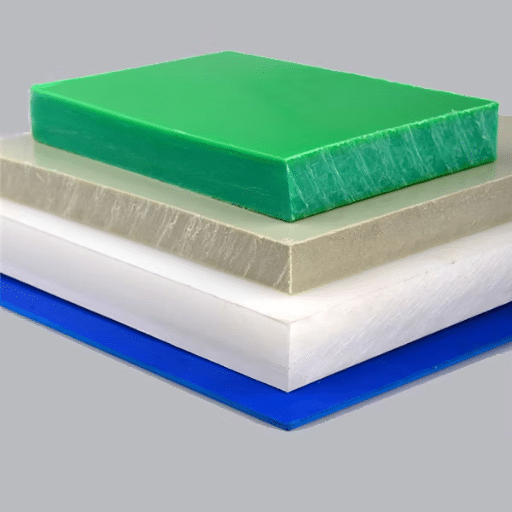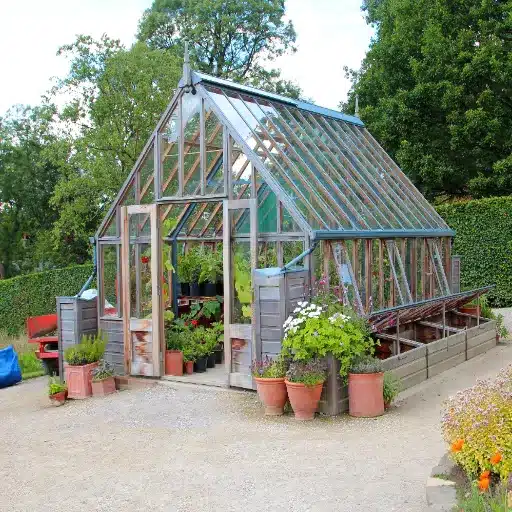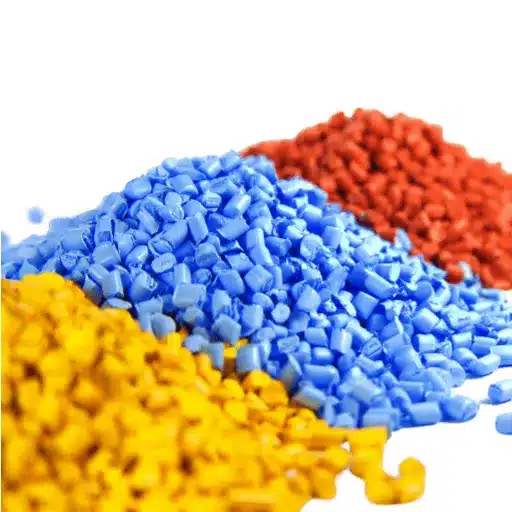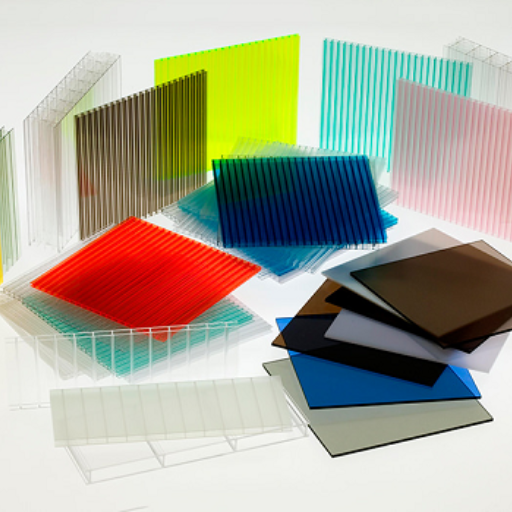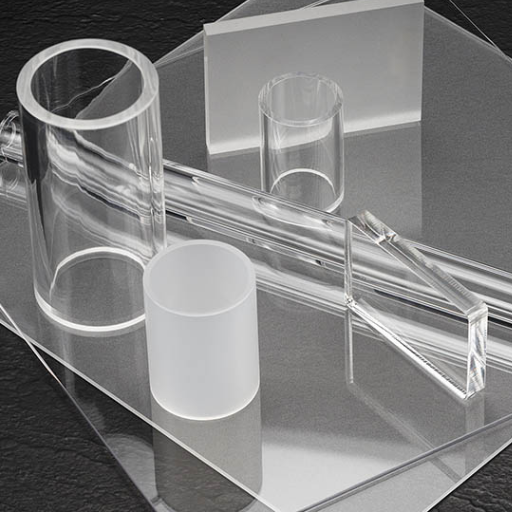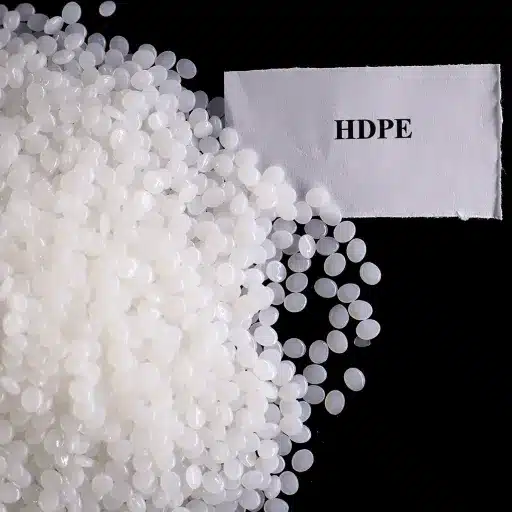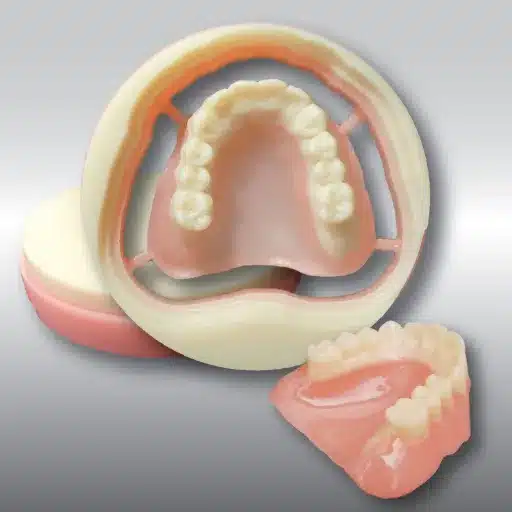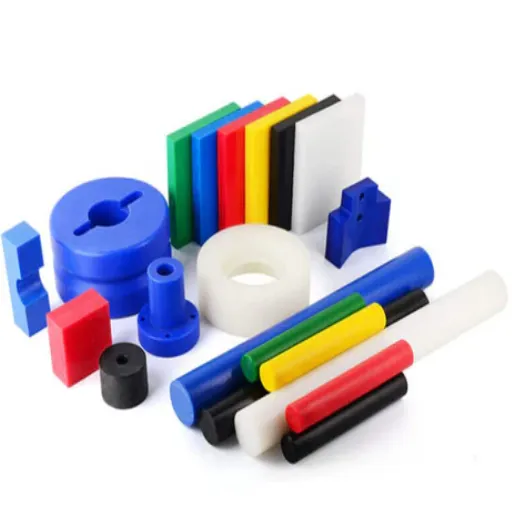High-density polyethylene (HDPE) stands as one of the most flexible and versatile plastics in existence today. This remarkable material appears everywhere—from small household objects to essential industrial processes. Yet HDPE’s significance in our daily lives, work environments, and construction projects often goes unnoticed. This article explores HDPE and its importance in an engaging way, discussing its fascinating characteristics, major advantages, and diverse applications across different sectors. Whether you’re a curious consumer or a professional seeking sustainable material options, this comprehensive guide will reveal why HDPE has earned its reputation as a game-changing material. Prepare to delve deeper into the science, innovations, and environmentally-friendly aspects of this vital plastic.
What is High-Density Polyethylene (HDPE)?
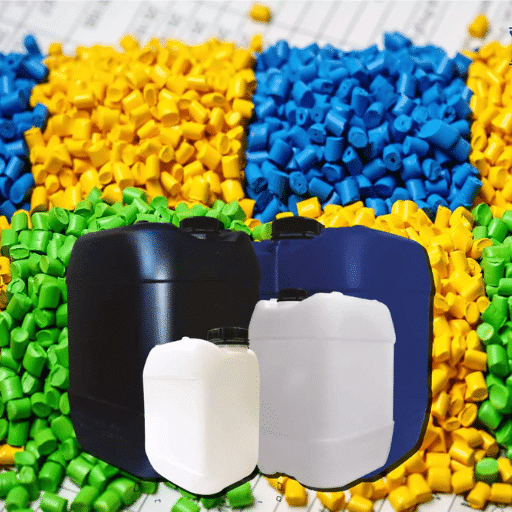
Definition and Composition
High-Density Polyethylene (HDPE) belongs to the thermoplastic polymer category and is manufactured using the monomer ethylene. It stands apart due to its exceptional strength-to-density ratio, which makes it both highly durable and remarkably lightweight. HDPE’s primary structure consists of linear chains with minimal branching, leading to very close molecular packing. This arrangement produces a remarkable combination of tensile strength, impact resistance, and low moisture absorption.
The very nature of HDPE gives it the ability to withstand environmental elements, acids, bases, and sunlight, providing a wide range of applications including packaging, construction, and piping systems. Additionally, the recyclability aspect enhances this material’s status in both industrial operations and sustainable practices.
Properties of HDPE
High-Density Polyethylene (HDPE) ranks among the most utilized materials across different industries thanks to its excellent properties. Here are the key characteristics that make HDPE exceptional:
- High Strength-to-Density Ratio: Guarantees long-lasting use while keeping the material lightweight, making it ideal for diverse applications.
- Exceptional Durability: Can withstand impacts, scratches, and contact with chemicals, ensuring reliability even in tough environments.
- Excellent Thermal Stability: Remains functional over a large temperature range, making it suitable for various climate conditions.
- Low Moisture Absorption: Perfect for applications involving storing or transporting liquids without degradation.
- UV Resistance: Advanced UV technology has made HDPE highly resistant to sunlight, extending its outdoor usage capabilities.
- Recyclability: Environmentally sustainable option that conforms to growing environmental consciousness and corresponding practices.
Difference Between HDPE and LDPE
High-Density Polyethylene (HDPE) and Low-Density Polyethylene (LDPE) constitute two major thermoplastics but with very different properties, applications, and production processes. Understanding these differences is crucial for selecting the right material for specific applications.
| Property | HDPE (High-Density Polyethylene) | LDPE (Low-Density Polyethylene) |
|---|---|---|
| Density and Structure | Very compact molecular structure with almost no branches; high density results in strong, rigid material | Highly branched molecules; lower density creates light, pliable, flexible material |
| Strength and Durability | Greater strength and durability; solid crystalline structure resists cracking and breaking; highly chemical resistant | Less durable but very soft and elastic; excellent for applications requiring flexibility |
| Common Applications | Pipes, containers, plastic bottles; strong and withstands extreme conditions | Plastic films, shopping bags, squeeze bottles; soft and elastic properties ideal |
| Temperature Resistance | More resistant to heat; suitable for higher temperature applications | More flexible but lower melting point; not suitable for high-heat applications |
| Environmental Considerations | Frequently recycled; popular among durable goods manufacturers with established collection systems | Both recyclable but LDPE rarely recycled; thin film applications make recycling complicated |
Common Uses of HDPE Plastic

Applications in Packaging
The application of HDPE plastic is quite extensive due to characteristics such as high durability, impact resistance, and excellent moisture resistance, making it the most commonly used material in the packaging industry. These properties make it ideal for milk jugs, detergent containers, and juice bottles where the strong structure supports safe storage and transport of liquids. HDPE is also a main ingredient in producing rigid containers for food products such as yogurt and butter, where preventing air and moisture infiltration is critical to avoid premature spoilage.
🌱 Sustainability Note: Advances in recycling technology and green initiatives have pushed the use of HDPE in environmentally friendly packaging. Reports show that among plastic materials, HDPE has the highest recycling rate globally, ensuring its central role in creating eco-friendly packaging systems and reducing plastic waste trends.
Industrial and Commercial Uses
High-Density Polyethylene (HDPE) is one of the most versatile materials with a wide range of applications in different industries due to its durability, chemical resistance, and lightweight nature. Recent statistics indicate that HDPE is predominantly found in the construction sector where it’s used for piping systems installations, thanks to the material’s strength and corrosion resistance making it suitable for both water and gas pipelines.
Moreover, the automotive industry takes advantage of HDPE for manufacturing fuel tanks and other components, focusing on the material’s strong but lightweight characteristics to enhance vehicle effectiveness. In packaging, HDPE remains significant for reusable containers, plastic crates, and industrial drums, which all require both durability and reusability properties. The agriculture sector also benefits through HDPE geocells and irrigation systems, pointing to its ability to cope with environmental challenges.
🏗️ Construction Sector
Piping systems, water and gas pipelines utilizing strength and corrosion resistance
🚗 Automotive Industry
Fuel tanks and components leveraging lightweight strength for enhanced vehicle efficiency
📦 Packaging Solutions
Reusable containers, plastic crates, industrial drums requiring durability and reusability
🌾 Agriculture
Geocells and irrigation systems demonstrating ability to cope with environmental challenges
Moreover, HDPE is seen as a main component of sustainable solutions as developing applications show the need for such practices in industry. Applications include recycled plastics for construction materials and eco-friendly packaging alternatives. These new uses for HDPE indicate its necessity for facilitating the adoption of sustainable practices in associated industries.
HDPE in Construction
High-Density Polyethylene (HDPE) has been and continues to be widely used in the construction industry owing to its ability to withstand harsh climates while remaining environmentally friendly. Recent search analytics indicate that HDPE’s area of focus keeps moving toward infrastructure projects such as building drains, geocells, and pipe lining. Its exceptional corrosion and chemical resistance make it the perfect choice for long-lasting construction projects.
Moreover, because of its lightweight nature, transportation costs are reduced while saving installation time, which makes it attractively discussed in this sector. Search engine trends show significant consideration for sustainable construction, with HDPE being an eco-friendly product comprising up to 100% recycled materials, thus meeting global goals for cleaner construction. Without doubt, HDPE is becoming a material with both practicality and environmental friendliness in modern construction.
Benefits of Using High-Density Polyethylene

✓ Strength-to-Density Ratio Advantages
HDPE (High-Density Polyethylene) possesses an unmatched strength-to-density ratio, making it a material of choice for different industrial purposes. Though lightweight, HDPE still has extraordinary endurance and resists impact, stress, and wear. Recent data from search trends reveal growing interest among users for materials that give high performance with minimal environmental impact.
HDPE provides this exact combination as it cuts down on material usage while keeping structural foundation intact, which is especially appreciated in sectors like construction, packaging, and manufacturing. This combination of strength, efficiency, and sustainability explains the rise of HDPE’s popularity, with recent online searches concentrated on high-powered yet environmentally-friendly materials.
✓ Corrosion Resistance and Durability
One of the most remarkable traits of High-Density Polyethylene (HDPE) is its superior resistance to corrosion and long-lasting durability. Unlike metals, HDPE is not susceptible to rusting or deterioration when the material contacts moisture, chemicals, or extreme weather. This property has made it the number one option for industries needing long-lasting materials, such as plumbing, marine, and chemical storage.
According to recent statistics from search engines, consumers are constantly checking how long HDPE lasts compared to other materials. The statistics suggest a shift toward materials that cut down maintenance costs while offering longevity. HDPE possesses both thanks to its non-reactive nature and resistance to both physical and chemical wear and tear over extended periods. This makes it extensively used in both industrial and everyday applications.
✓ Variety of Colors and Customization Options
The durability of HDPE encompasses its versatility—the material comes in many different colors and can be tailored to fit various applications. Latest reports from search engines indicate an upsurge in searches for resources that can be altered and are aesthetically pleasing, clearly showing that consumers incline towards both functionality and beauty. HDPE answers these requirements through its color consistency and UV resistance, which guarantees bright shades even when exposed to sunlight for extended periods. It’s also easy to sculpt into various forms and sizes appealing for different industries like construction and consumer goods. Thus, HDPE is not only a tough choice but also a highly versatile one that can adapt to changing market demands.
Environmental Impact of HDPE

Sustainability Practices in HDPE Production
Modern HDPE production has become significantly more sustainable, thanks to processes that consume less energy and emit fewer greenhouse gases. Moreover, many producers have started using closed-loop recycling methods, where used HDPE is gathered, treated, and made into new products, thus reducing the need for virgin materials.
The development of catalyst technology has been an important step toward sustainability goals since increasingly efficient production methods allow production of high-grade HDPE with less negative environmental influence. Besides, to meet global carbon emissions reduction goals, conventional electricity has been replaced by renewable energy sources such as solar or wind power in production facilities. To sum up, innovation in the HDPE industry coupled with environmental care can be seen in these initiatives.
Recyclability of High Density Polyethylene
High Density Polyethylene (HDPE) not only ranks as one of the most recyclable types of plastic but also ranks high in that regard. In fact, latest statistics indicate that the USA has a plastic recycling rate of about 30%, with HDPE among the most recycled plastics due to its properties such as durability and versatility. Additionally, this material can be reused indefinitely in producing new items without any major quality loss.
♻️ Common HDPE Recycling Examples
- Milk jugs → Recycled into plastic lumber and outdoor furniture
- Detergent bottles → Transformed into new containers and piping
- Plastic pipes → Reprocessed into construction materials
Continuous progress is being made to improve HDPE’s recyclability. Technologies like advanced sorting and chemical recycling methods have been greatly instrumental in delivering projected success rates and quality of recycled material. Furthermore, actions taken by global programs and increasingly strict regulations are prompting producers to create more recyclable HDPE such as those made using clear or single-colored materials and those with fewer mixed materials. These changes speak to HDPE’s possible role as a green material in a closed-loop economy.
Addressing Long-Term Environmental Concerns
Discussion of long-term environmental concerns caused by HDPE revolves around the need for a comprehensive approach that entails innovation, education, and international cooperation. Despite the fact that HDPE can be recycled many times, low recycling rates remain a major problem. Current estimates show that only about 9% of plastics produced globally get recycled, with HDPE accounting for a small percentage of that.
Closing this gap requires developing recycling infrastructure and running consumer awareness programs that teach the public proper waste separation and recycling practices. Moreover, adopting bioplastics or using renewable feedstocks for HDPE production may result in a large reduction in its carbon footprint. It’s important for governments, industries, and consumers to work together in promoting sustainable consumption, matching their activities with advancements in technology and regulation to efficiently reduce plastic pollution. Application of such measures will enable HDPE to significantly participate in creating a greener, more sustainable planet.
Recent Innovations and Industry Trends
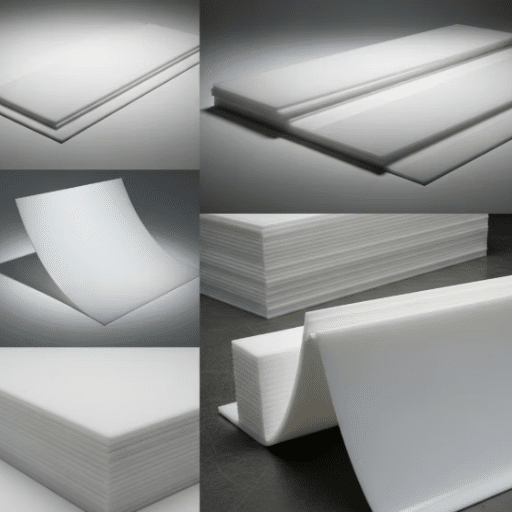
Advancements in HDPE Manufacturing
Recent advancements in HDPE manufacturing have been driven by environmental policies and material performance improvements. The innovations encompass establishment of closed-loop recycling systems, which are responsible for collection, processing, and reuse of post-consumer HDPE products so efficiently that they can be used to make new products. Moreover, manufacturers have resorted to sophisticated catalyst technologies intended to perfect the polymerization process, producing HDPE with higher strength, greater flexibility, and wider application possibilities.
Another breakthrough is blending HDPE with bio-based additives, a process that cuts down fossil fuel use and decreases CO2 emissions. Not to mention that digital technologies such as AI and machine learning are also being employed in refining production processes, ensuring efficiency is at its peak while waste is minimized. These advancements align very much with the global trend of circular economies and green manufacturing practices, proclaiming a bright future for HDPE as industries adapt to meet changing sustainability demands.
Marine Grade HDPE Developments
Marine Grade High-Density Polyethylene (HDPE) has made tremendous progress in recent years, with applications in the marine sector being multiplied. The material, made to endure the roughness of the sea, is characterized by very long life, UV resistance, and reduced maintenance, making it a good candidate for docks, boat parts, and aquaculture systems.
Along with the technical side, recent breakthroughs also focus on the environmental aspect, as more manufacturers use post-consumer HDPE in marine-grade products while maintaining acceptable performance levels. Innovations in production methods have also made it possible to develop HDPE that is not only lighter but also more adaptable to specific marine applications. These new developments, together with environmental consciousness, give marine grade HDPE the position to be the go-to material for durable marine solutions. This coincides with the rise in global strategies aimed at using high-tech materials to prevent pollution and overuse of sea and river resources.
Emerging Applications in New Markets
Marine Grade HDPE is making its way into new applications at a rapid pace across various industries. One such industry is the renewable energy sector, which is using HDPE primarily in constructing floating solar panel platforms that are durable in harsh aquatic environments. Similarly, aquaculture is making use of HDPE for producing fish farming cages and nets, with life span and resistance to seawater being major factors.
📈 Market Trend: Data from search trends signifies a steady global increase in interest in HDPE search terms related to renewable energy and aquaculture specifically. This increase reflects a growing market that is sustainability-oriented and innovative material use-driven. HDPE’s flexibility continues to open up new and emerging markets by providing a bridge between environmental concerns and advanced engineering solutions.
Key Statistics and Industry Data
📊 HDPE by the Numbers
Best Practices for Working with HDPE
✅ Essential Guidelines for HDPE Applications
- Material Selection: Always verify that the HDPE grade matches your application requirements. Check for certifications, especially for food-contact or medical applications. Request documentation on molecular weight, crystallinity, and additives.
- UV Protection: For outdoor applications, ensure UV-stabilized HDPE is specified. Black HDPE with carbon black additives offers superior UV resistance compared to natural or colored variants.
- Proper Storage: Store HDPE materials in cool, dry locations away from direct sunlight. Maintain appropriate temperature ranges to preserve material properties before fabrication or installation.
- Fabrication Techniques: Use appropriate welding methods (hot air, extrusion welding) for joining HDPE. Clean surfaces thoroughly before welding to remove contaminants. Consider mechanical fasteners for structural applications requiring additional rigidity.
- Installation Planning: Account for thermal expansion and contraction in HDPE installations, especially in temperature-variable environments. Provide adequate support and allowances for movement.
- Maintenance Protocols: Establish regular inspection schedules for HDPE installations. Check for signs of wear, stress cracks, or chemical exposure damage. HDPE requires minimal maintenance but benefits from periodic cleaning and inspection.
- Recycling Commitment: Implement end-of-life plans for HDPE products. Partner with certified recycling facilities. Educate staff and customers about proper disposal and recycling procedures.
- Documentation: Maintain records of material specifications, installation dates, and maintenance activities. This documentation supports warranty claims and helps optimize replacement schedules.
Comparison: HDPE vs. Other Common Plastics
| Feature | HDPE | LDPE | Polypropylene (PP) |
|---|---|---|---|
| Density | High (0.941-0.965 g/cm³) | Low (0.910-0.940 g/cm³) | Medium (0.895-0.920 g/cm³) |
| Strength | Excellent tensile strength | Good flexibility, lower strength | Very high tensile strength |
| Chemical Resistance | Excellent | Good | Excellent |
| Temperature Resistance | Good (-50°C to 80°C) | Moderate (-40°C to 80°C) | Excellent (-20°C to 120°C) |
| Recyclability | Highly recyclable (#2) | Recyclable but less common (#4) | Highly recyclable (#5) |
| Common Uses | Bottles, pipes, containers | Plastic bags, films | Food containers, automotive parts |
| Cost | Moderate | Low | Moderate to High |
Frequently Asked Questions (FAQ)
❓ Are high-density polyethylene sheets safe for food and beverage containers?
Yes, many high-density polyethylene sheets are food-grade quality and are widely used to make food and beverage containers as well as cutting board surfaces. Food-grade HDPE plastic material is designed to leach minimally and meet safety standards, plus antimicrobial formulations are provided for hygiene-sensitive environments. Though HDPE varies in chemical resistance and durability compared to alternatives like polypropylene or low-density polyethylene, it still offers a good balance of both. When purchasing panels, always check with plastic manufacturers or suppliers for certification and intended use, particularly for direct food contact. If you’re interested in getting more information about HDPE, ask for documentation on molecular weight, crystallinity, and any additives used.
❓ Can HDPE plastic sheets be welded or joined for fabrication?
Definitely, HDPE plastic sheets can be welded using hot air technique, extrusion welding, or specialized solvents based on thickness and application. This allows the creation of corrosion-resistant pipes and geomembranes. Welding, if done correctly, will give pipes and tanks leak-free joints as it provides intermolecular forces and tensile connections which are stronger. The preparation process may involve cleaning the weld area of petroleum or plastic residues and selecting the right solvents that are compatible with the weld. Thus, for structural applications like orthotic and prosthetic devices or signage, manufacturers often use mechanical fasteners in addition to welding to improve rigidity. Just make sure you follow the supplier’s guidelines and consider professional fabricators who are acquainted with standard HDPE equipment.
❓ Why is HDPE often recommended for outdoor and weather-resistant uses?
The main reason is that, besides its weather-resistant and UV rays-resistant characteristics (especially if UV-stabilized), it has quite low susceptibility to damage from the sun and different climates. Its corrosion- and chemical-resistant properties along with the ability to withstand virtually any outdoor condition make it suitable for pipes, signs, and outdoor furniture materials. In fact, though HDPE is only slightly denser than some other polyethylenes, its crystallinity and minimal branching lead to improved stiffness and durability. Many geomembranes and landfill liners are made of HDPE for long-term performance and chemical stability. Always check for additives that enhance UV protection when selecting outdoor grades and if antimicrobial performance is needed for public or food-related installations.
❓ What are the environmental considerations for HDPE sheets at end of life?
HDPE is a material that can be recycled and is widely accepted in various recycling streams, thus it has a reduced impact on landfills compared to some other plastics, although recycling rates vary across regions. Since HDPE comes from petroleum-based feedstocks such as ethylene, both sourcing and disposal raise issues related to fossil resources and lifecycle emissions. However, reprocessing HDPE products like bags, signage, or containers into pellets and then using them again for making new polyethylene sheets or for injection-molding processes is a common practice. The biodegradation of HDPE in landfill conditions is slow, so the best way to tackle it is through recycling or reuse programs that limit the plastic’s long-term permanence. When aiming to produce a lower environmental footprint, opt for post-consumer recycled content options from suppliers like Acme Plastics or BuyPlastic.
❓ Does black HDPE offer different properties than natural HDPE?
In most cases, black HDPE has carbon black or other pigments that improve UV resistance and mask surface imperfections, making black HDPE more suitable for outdoor applications than unpigmented natural HDPE. The incorporation of carbon black adds to the weather-resistance performance and at the same time reduces degradation caused by sun’s rays, which ultimately prolongs the service life of not only signage, piping, or geomembranes but also other applications. From the viewpoint of physical properties and molecular weight, black HDPE is usually similar to equivalent grades of high-density polyethylene, with the primary difference being enhanced UV protection and aesthetic appearance.
Reference Sources
📚 Academic and Research Resources
University of Texas at Austin – Chembook
A detailed comparison of LDPE and HDPE, discussing their properties, melting points, and applications.
Focus: LDPE vs HDPE – Chembook
Cornell University
An article on enhancing the recyclability of waste plastics, with a focus on the versatility and ubiquity of high-density polyethylene (HDPE).
South Dakota State University – Open PRAIRIE
A thesis exploring the potential of high-density polyethylene as a material for additive manufacturing.
Focus: Additive Manufacturing with High-Density Polyethylene
Conclusion
High-Density Polyethylene (HDPE) has proven itself as an indispensable material in modern industry and everyday life. Its exceptional combination of strength, durability, chemical resistance, and environmental sustainability makes it the preferred choice across countless applications—from packaging and construction to marine engineering and renewable energy infrastructure.
Understanding the fundamental properties of HDPE, including its high strength-to-density ratio, corrosion resistance, and recyclability, enables informed decision-making for both industrial applications and consumer choices. The material’s versatility extends beyond traditional uses, with emerging applications in sustainable energy, aquaculture, and advanced manufacturing demonstrating HDPE’s adaptability to meet evolving market demands.
As global emphasis on sustainability intensifies, HDPE’s recyclability and potential for closed-loop manufacturing systems position it as a critical component in the transition toward circular economies. Recent innovations in production methods, including bio-based additives, advanced catalyst technologies, and digital manufacturing processes, continue to enhance HDPE’s environmental profile while maintaining its superior performance characteristics.
Whether you’re a manufacturer seeking durable, cost-effective materials, a designer exploring sustainable options, or a consumer making environmentally conscious choices, HDPE offers a compelling solution. By following best practices in selection, fabrication, installation, and end-of-life management, we can maximize HDPE’s benefits while minimizing environmental impact. The future of HDPE looks bright as continued innovation and commitment to sustainability drive this remarkable material toward even greater achievements in performance, versatility, and environmental responsibility.






